
We are all fans of funny and adorable animal antics, like pets that absolutely never listen. We revel in their many acts of heroism and their kind contributions to society. But these furry friends of ours aren’t limited to viral videos and articles. Animals play a huge part in our lives, both virtual and real. They show bravery, loyalty, and intelligence and often take on roles in major motion pictures, even playing the lead or important supporting characters. We have even sent some animals to space! These animals have gained fame for their exploits, their achievements, and their monumental appearances in various important industries.
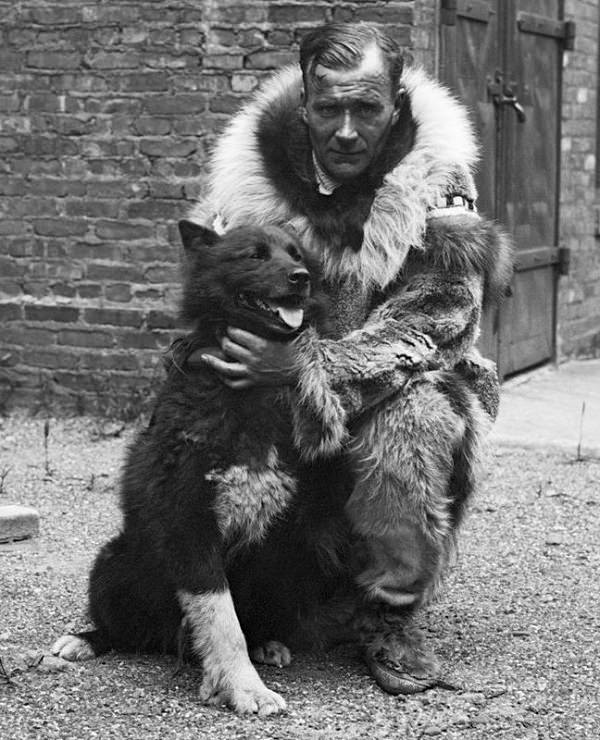
(By Brown Brothers, Wikimedia Commons)
Balto was a beautiful but fierce Siberian Husky born in 1919 in the town of Nome, Alaska. In the winter of 1925, the younger population of Nome was struck with a potentially deadly epidemic, Diphtheria and the only anti-toxin available had to be transported from Anchorage. As the town's only airplane was no longer functional because of the cold, the serum had to be transported to Nenana by train, and then by dog sled, from Nenana to Nome.
20 mushers and their teams participated in this serum run. The second to last stretch of the run was carried out by musher Gunnar Kaasen, and his dog team led by Balto. On reaching the final relay point, he found the team to be sleeping, and he and Balto pressed onwards, delivering the medicine to Nome through blistering winds and absolute darkness. A statue of this brave dog still stands in Central Park, New York City.
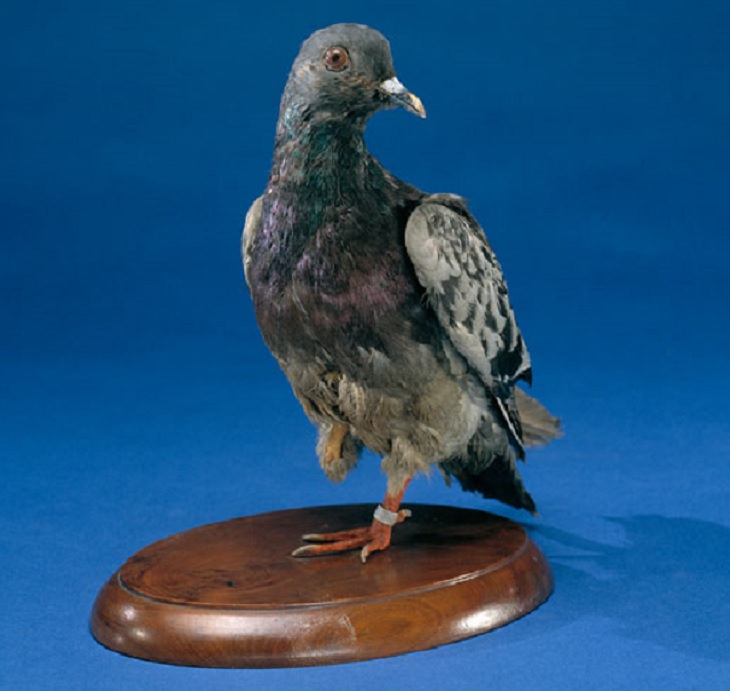
(Flickr)
Homing pigeons were a frequently used mode of communication on battlefields, prior to the days of radios and more advanced tech. Cher Ami is by far the most famous homing pigeon, known for her mission in 1918 to save the “Lost Battalion” in France.
The American battalion in question was not actually lost and had in fact been relaying accurate information on the location of German troops in the area, using homing pigeons. A misread communication led the incoming American troops to fire directly on the location of the battalion on the northern slope of Charlevaux Ravine, believing them to be on the southern side. Their unwitting attack triggered German gunfire.
The battalion dispatched their final pigeon, Cher Ami, with a message to inform their counterparts of their mistake and to ceasefire. At first, shaken by the barrage of bullets, Cher Ami made a quick recovery and made an incredible flight across 25 miles in 25 minutes despite receiving severe injuries at the start of the journey.
For the valiant flight, Cher Ami was awarded the French Cross of War, the Croix de Guerre, and her remains are on display at the National Museum of American History.
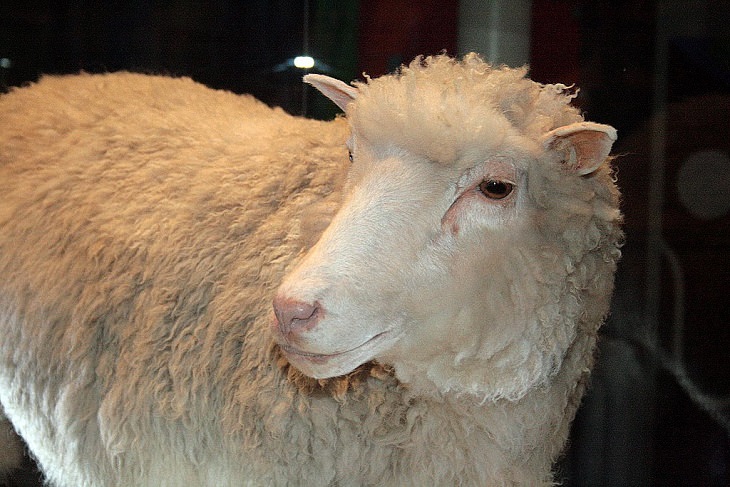
(By Toni Barros, Wikimedia Commons)
This sweet looking lamb was a creation of the combined efforts of scientists from Roslin Institute of Scotland’s University of Edinburgh and a biotechnology company called PPL Therapeutics, and has been called “the world’s most famous sheep”. Named after country singer Dolly Patron, Dolly the sheep was born on 5th July 1996 and was revealed to the public one year later.
Dolly was the first clone ever to be produced from a mammary gland cell. Her creation sparked an endless debate and much controversy in the scientific community, regarding whether or not cloning of animals is viable and ethical, and whether the same could lead to attempts at human cloning, a dangerous possibility. Others, however, saw the cloning of Dolly as a step towards the use of therapeutic cloning as a treatment for conditions like Alzheimer’s Disease, as well as the use of animal cloning for human organ donation.
Members of the media were most excited about the presence of Dolly, the first animal cloned from an adult cell (though not the first animal ever cloned). Time magazine even had a special on Dolly the sheep. She finally passed away due to lung disease, unrelated to the process of cloning that created her, when she was a little under 7 years old.
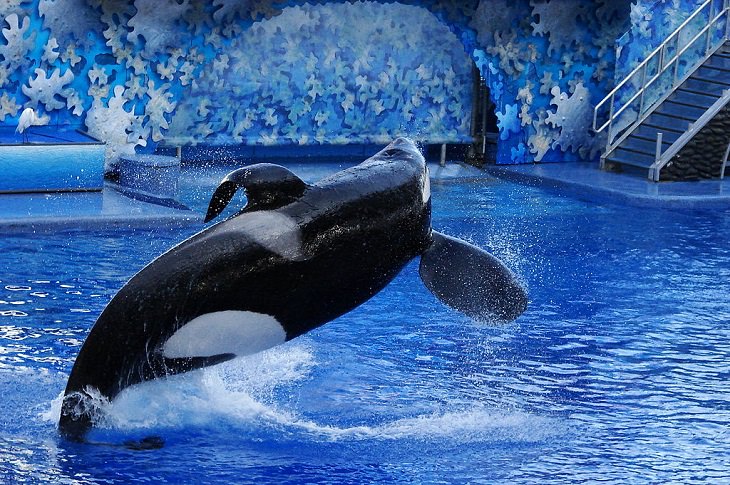
(By Loadmaster (David R. Tribble), Wikimedia Commons)
Tilikum, better known as Tilly was an Orca whale that was captured and placed in an Icelandic marine zoo before being transferred to Sealand of the Pacific, in Oak Bay, Canada in 1984. Tilly was a part of the breeding program at SeaWorld, Orlando until his passing in 2017, and produced 21 offspring.
Orca whales are massive creatures, much larger than humans, with powerful jaws and moving at fast speeds. They can be dangerous creatures, something which is often forgotten when we watch them wave and flip in the water. That being said, orca whales aren’t inherently aggressive creatures, and there have been few attacks on humans by wild orcas, none of which were fatal. Only 4 deaths have been caused, all by orca whales in captivity and 3 of which were caused by Tilly.
The first occurred in 1991 when a part-time trainer at Sealand slipped and fell into the pool, after which Tilly and the other orcas in the water stopped her from leaving the pool and drowned her. A year later, Tilly was sent to SeaWorld, Orlando. The next death occurred in 1999, under somewhat mysterious circumstances, as the victim appeared to have climbed into the water unclothed after the park was closed. In 2010, as veteran trainer Dawn Brancheau rubbed Tilly, a common interaction, Tilly proceeded to pull her into the water by her ponytail. Dawn drowned as a result.
Tilly gained immense fame in 2013 when the documentary movie “Blackfish” premiered at the Sundance Film Festival. This movie followed the capture and proceeding captivity that Tilly endured and, more importantly, tracks the possible impact of this tumultuous and constant movement on the whale’s aggressive behavior. The film followed all possible harassment Tilly and other orca whales faced in captivity and includes testimonials from notable trainers.
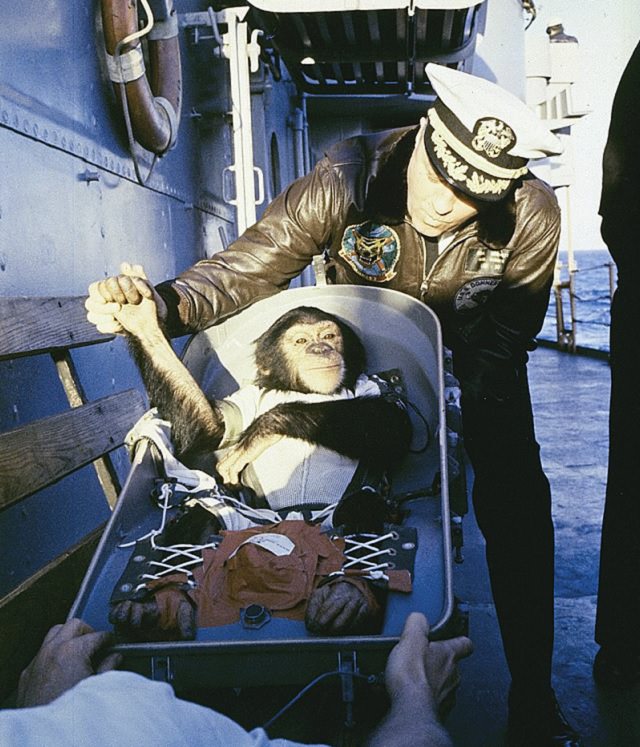
(By NASA, Wikimedia Commons)
This special chimpanzee changed the game for astronomers everywhere and was the first hominid (great ape) to reach outer space. His mission was considered of vital importance as it determined conclusively that tasks could be carried out in space with efficiency.
Ham was purchased by Holloman Air Force Base when he was two years old in 1959. He, along with 40 other chimpanzees, were selected as possible flight candidates. After numerous rounds of training and testing, Ham, known then only as No.65 (and “Chop Chop Chang” by his handlers) was selected out of the final 6. The monkey then received further specific training under the direction of neuroscientists in the Holloman Aerospace Medical Centre.
Unlike all previous missions which sent animals to space, Ham was selected and trained for a very specific purpose. He was not merely a silent and unmoving passenger and had a task to carry out in space to determine whether or not human travel would be viable. Ham’s training included pushing a lever within 5 seconds of seeing a certain flashing light go off. Ham would need to do this in space at the right time to confirm whether activities could be performed in space.
Ham (named after the Holloman Aerospace Medical center in which he was trained) was launched into space from Cape Canaveral in January 1961. Despite his capsule suffering a sudden loss of pressure, Ham remained unharmed in his spacesuit and successfully pushed the lever. His 16-minute flight ended in the Atlantic ocean where he was recovered by a rescue ship. The results of his flight directly impacted the 1961 mission carried out by the Freedom 7 with astronaut Alan Shepard. Ham spent the next 17 years of his life happily in Washington D.C’s National Zoo.